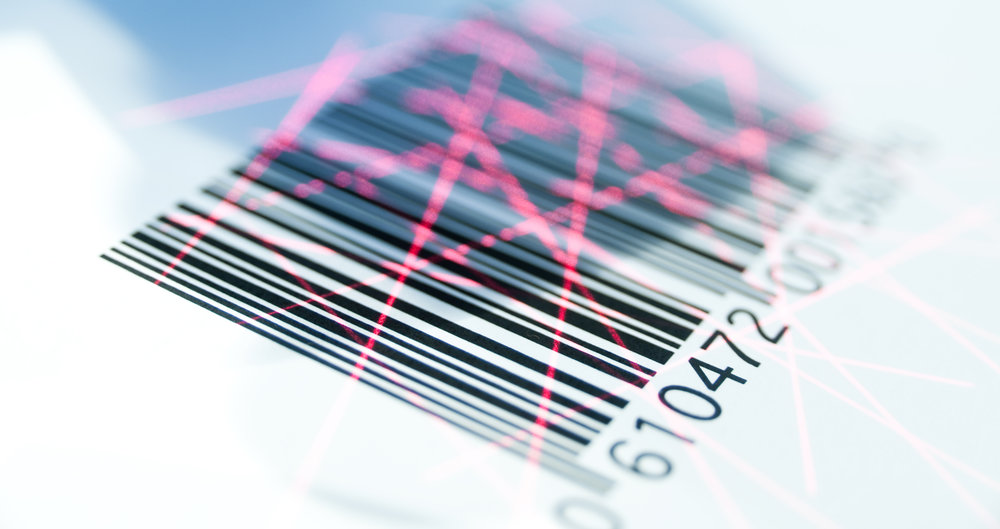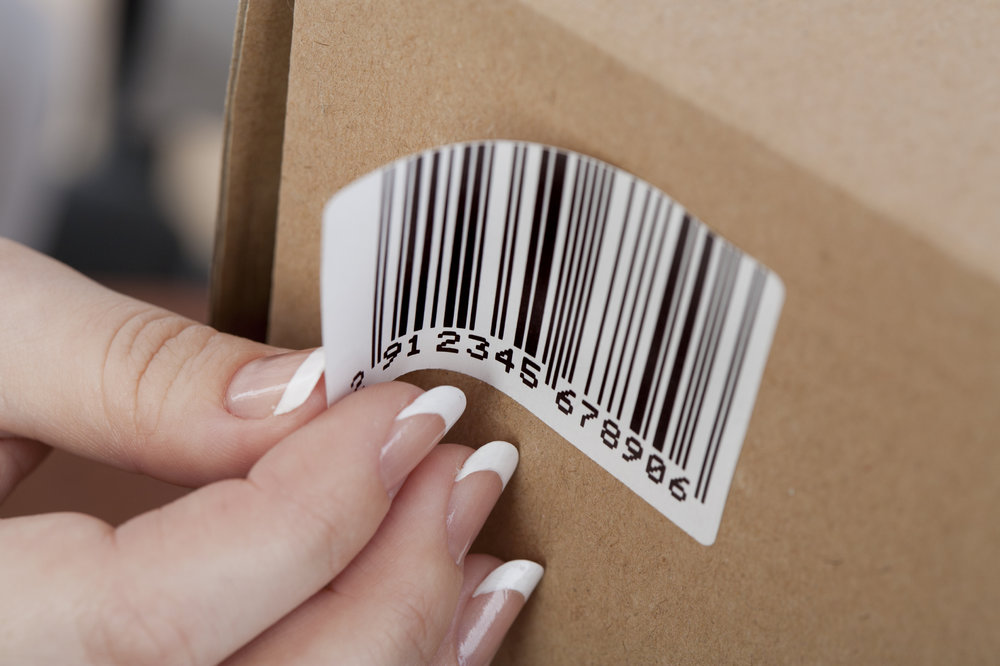Wasp Barcode Technologies: The Barcode Solution People
Creative Ways To Use Barcodes Around the World

If you’re a small business owner who recognizes the value of tracking your inventory as it makes its way from the supply chain, you probably already utilize barcodes in some capacity. Either that, or you’ve enlisted the services of a third-party company—like FedEx, Postmates, DoorDash, just to name a few—that does.
The truth is, most of us, in our daily lives, don’t give barcodes a second glance. If we’re using self-checkout at the grocery store, that might be the only time all week we even think to look for that simple yet fantastically effective design, which tells the computer how much to charge us for that head of lettuce or pound of turkey.
But barcodes are more than just supermarket shorthand. They are one of the essential building blocks of
inventory and asset management systems around the world. They’re what companies like Amazon, Target and Wal-Mart use to remain
ruthlessly efficient in the global marketplace; they’re how small business owners can track a customer’s package from one doorstep to another. They are becoming ubiquitous in the world of supply chain management, and when something becomes ubiquitous, people start getting creative with them.

Whether you’re carving out a niche as a mid-level distributor, or you’re a one-person business selling your handcrafted wares on platforms like Amazon and Etsy, you might want to take note of the inventive ways barcodes are being used around the world. Perhaps your can incorporate greater efficiency into your supply chain, or create new chains where none existed before.
Don’t Stop At One: Put Barcodes Everywhere
We’ve all been there: Standing at the checkout line, turning the box end over end, trying to find the barcode, and then when we do, moving it past the barcode reader five or six times until we get a reading. It’s even stranger to watch a cashier go through this struggle, and it takes valuable time. Think of all the billions of packages that move across the globe and put various people through this brief but costly process.
Once you think of it that way, there’s a certain genius to the madness of Aldi, a cheap supermarket chain in the vein of Trader Joe’s that focuses on its own private label brands. Aldi absolutely slathers on the barcodes—there’s a barcode on almost every surface of every product—or enlarges them well past the traditional size.
The result? Aldi is renowned for its incredibly fast check out process. Lots of companies feel as though they can’t mess with their packaging by affixing multiple barcodes to it, but if you’re visiting Aldi, you’re not there for the pretty packaging. You’re there for low prices, which come as a result of low labor costs and less attention paid to aesthetics than results.
If you’re looking for ways to increase efficiency, don’t stop at one barcode, or limit yourself to traditional packaging. This small hack reportedly lets Aldi employees scan items
40 percent faster than other retail stores. Would you turn down a 40 percent boost in any category?
[Tweet "If you’re looking for ways to increase efficiency, don’t stop at one barcode, or limit yourself to traditional packaging."]

Use Barcodes To Tell the Story of a Product
As mentioned above, most of us don’t think about barcodes once we leave the store. But what if barcodes could tell us more about the product we’re purchasing than how much it costs? Some sellers around the globe are beginning to embed more information in their barcodes than would be useful to just retailers.
This isn’t an entirely new concept: 2D barcodes (like QR or Data Matrix codes) which hold markedly more data than traditional 1D codes, have been able to provide photos, website links, and other customer-facing information to consumers for years. But recent campaigns have pushed this idea even further.
For example,
wooden handicrafts made in India and sold abroad are soon going to include barcodes that carry details about the product. India, among several other countries, is looking to rebuild consumer confidence after tough laws against illegally harvested timber were recently enacted. The barcodes will be able to tell the origin and history of the wood used to make that piece.
Imagine knowing just about everything you could about the gift you bought online from India, including exactly where the rosewood originated from and what steps it took to get to your door. One of the problems people have with online shopping is that it removes the personal connection from the purchase—but surprisingly, information technology can help bridge that gap again.
Small businesses could do the same with their products, to instill in customers a sense of trust and loyalty. By listing the providence of the item—where its materials are from, how it was made, what it took to make it—businesses can be transparent and held accountable.
Or maybe the story you want to tell isn’t about origin, but fiction, in order to grow the legend and mystique of your products (all in good fun, of course). The point being, there is no limit to how you can use your barcode to communicate with your customer after the sale has been completed. Go as entertaining or informative as you please.
Use Barcodes To Bring All Your Systems Into Alignment
What’s the one place you don’t want a single mistake to be made under any circumstances? If you guessed “hospital,” we’re on the same wavelength (mustard instead of mayo on your sandwich is easier to fix than administering the wrong dosage of medicine).
Healthcare 2D Barcode Scanner
Luckily, the use of barcodes in order to eliminate errors in the world of pharmaceutical drug management is becoming the norm. Hospitals use so many different systems to track the wellbeing of their patients, it’s surprising more life-threatening mistakes aren’t made.
Now, in
places like Dubai, it’s now obligatory that all pharmaceutical companies, agents, and suppliers use barcodes on their medicines, based on GS1 Standards and 2D Data Matrix. The barcodes with comply with approved systems and be compatible with the EPIC system and the smart pharmacy system, in order to ensure drug safety.
That’s probably the best part about barcodes: It’s virtually impossible to have a read error on them. Meanwhile, humans constantly making key-entry errors and are liable to make mistakes in ways that will mess up many a spreadsheet.
Use Them In Fun Marketing Campaigns
2D barcodes have been used to varying levels of success over the years, but using a
barcode printer to print out a 2D barcode that can be used in a variety of fun marketing campaigns still couldn’t be easier.
Just
a few ideas: Set up an online shop and leave the link in a QR code outside your building when you’re closed, to encourage shopping any time of day. Send people to your social media channels like Facebook, Instagram, and Twitter, to encourage them to follow or like your page. Put it on business cards and give people a reason to keep your card for more than a few moments before tossing it away.
Barcodes have been used in innovative ways for years now.
Here are some more interesting ways that businesses, nonprofits, and individuals alike have used barcodes to their distinct advantage, whether it was in providing more value to the customer or to make it easier for the company to follow regulatory rules.
These patterns of lines (and now, little squares) have long been flexible and deceptively useful in the retail space. As our use of smartphones (as barcode scanners and image readers) increases, the ways in which businesses can use barcodes to enhance their business’ processes will become equally myriad. Barcodes may usually be boxy in shape, but don’t be afraid to think outside the box when it comes to tracking your inventory and assets. Just
don’t reuse them!
 If you’re a small business owner who recognizes the value of tracking your inventory as it makes its way from the supply chain, you probably already utilize barcodes in some capacity. Either that, or you’ve enlisted the services of a third-party company—like FedEx, Postmates, DoorDash, just to name a few—that does.
The truth is, most of us, in our daily lives, don’t give barcodes a second glance. If we’re using self-checkout at the grocery store, that might be the only time all week we even think to look for that simple yet fantastically effective design, which tells the computer how much to charge us for that head of lettuce or pound of turkey.
But barcodes are more than just supermarket shorthand. They are one of the essential building blocks of
If you’re a small business owner who recognizes the value of tracking your inventory as it makes its way from the supply chain, you probably already utilize barcodes in some capacity. Either that, or you’ve enlisted the services of a third-party company—like FedEx, Postmates, DoorDash, just to name a few—that does.
The truth is, most of us, in our daily lives, don’t give barcodes a second glance. If we’re using self-checkout at the grocery store, that might be the only time all week we even think to look for that simple yet fantastically effective design, which tells the computer how much to charge us for that head of lettuce or pound of turkey.
But barcodes are more than just supermarket shorthand. They are one of the essential building blocks of  Whether you’re carving out a niche as a mid-level distributor, or you’re a one-person business selling your handcrafted wares on platforms like Amazon and Etsy, you might want to take note of the inventive ways barcodes are being used around the world. Perhaps your can incorporate greater efficiency into your supply chain, or create new chains where none existed before.
Whether you’re carving out a niche as a mid-level distributor, or you’re a one-person business selling your handcrafted wares on platforms like Amazon and Etsy, you might want to take note of the inventive ways barcodes are being used around the world. Perhaps your can incorporate greater efficiency into your supply chain, or create new chains where none existed before.



